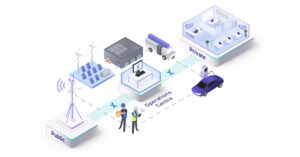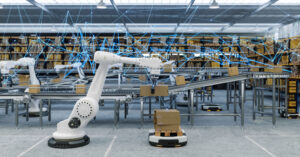Part 4 of 8: Enhancing Service Resilience to Persevere and Profit in Retail
As consumer shopping habits continue to trend online, every opportunity to help physical retailers close the gap must be seized. One problem that disproportionately affects brick-and-mortar retailers are service disruptions. Common service disruptions such as power outages can cost large retailers more than $5,000,000 per incident. In 2017, more than one-third of US retailers reported service outages. Of these, 40% lasted for more than an hour. And according to Bloom Energy, such outages appear to happen more than once per month for 21% of retail sector survey participants. This is a big deal. Wondering why?
Modernizing Retail Connectivity
Retailers are orchestrators of complex systems that interact constantly. Receivables rely on customer experience, store operations and ultimately Point of Sale (PoS). Many cash register or PoS systems have a direct dependency on local on premise back office services, power to the facility and network connectivity, often including internet. Therefore, if any of these dependencies are disrupted, the retailer is unable to accept payment, customer satisfaction is negatively impacted and inventory systems may become erroneous. Meanwhile – and somewhat comically – almost everyone in the store probably has a smartphone in their pocket with a built-in battery backup and ultra reliable network connectivity from their cellular provider.
If the store is part of the problem, get rid of it as a critical path item. Retailers no longer have to decide on polarizing cloud versus on premise system deployment. That’s because the emergence of “near edge” options allows any retailer to move mission critical services out of the store while still keeping them geographically nearby. Because of this, Operational Technology for store operations, PoS for taking payment and connected worker back office services can now be deployed at the edge.
If you’re unfamiliar, common deployment hosts for retail workload at the near edge include Amazon AWS Outposts, Microsoft Azure Stack Edge and Dell Ruggedized Servers. AWS and Azure even offer familiar cloud APIs and services to manage systems deployed at the near edge.
Increasing Value through Connected Workers
Connected worker adoption offers additional benefits to retailers well beyond mitigating the risk of service disruptions. Empowering workers with rugged tablets connected to near edge back office systems using carrier grade cellular services frees staff to effectively and efficiently interact directly with customers. This allows retail staff to move from a transactional relationship to a trusted advisor within the context of the customer in-store experience.

As such, retail staff can initiate a relationship with customers that extends beyond the store and ultimately results in cross sell, upsell and increased transaction size as part of the customer problem solving process. Even in the event of a power outage, connected workers can still be productive and easily take payment to complete a transaction using services like Square, Stripe or Shopify right on a tablet.
A Path Forward
Expeto is well positioned to serve retailers of any size with reliable 5G connectivity for connected worker solutions. Retailers are able to pull back control of the wireless data network for retail devices such as tablets, robots, cameras, sensors and more. Direct connections can be securely integrated with the near edge system to complete the feedback loop. With full control of end to end services, retail developers are free to use APIs from Expeto and back office systems to create new solutions for staff and customers with a unique competitive advantage. The result? A solution that helps retailers consume 5G connectivity their way.
Avoid costly service disruptions by moving to modern connected worker solutions – connected using your network, your way powered by Expeto.
To read more in Brian Baird’s Shadow OT series, click below!






